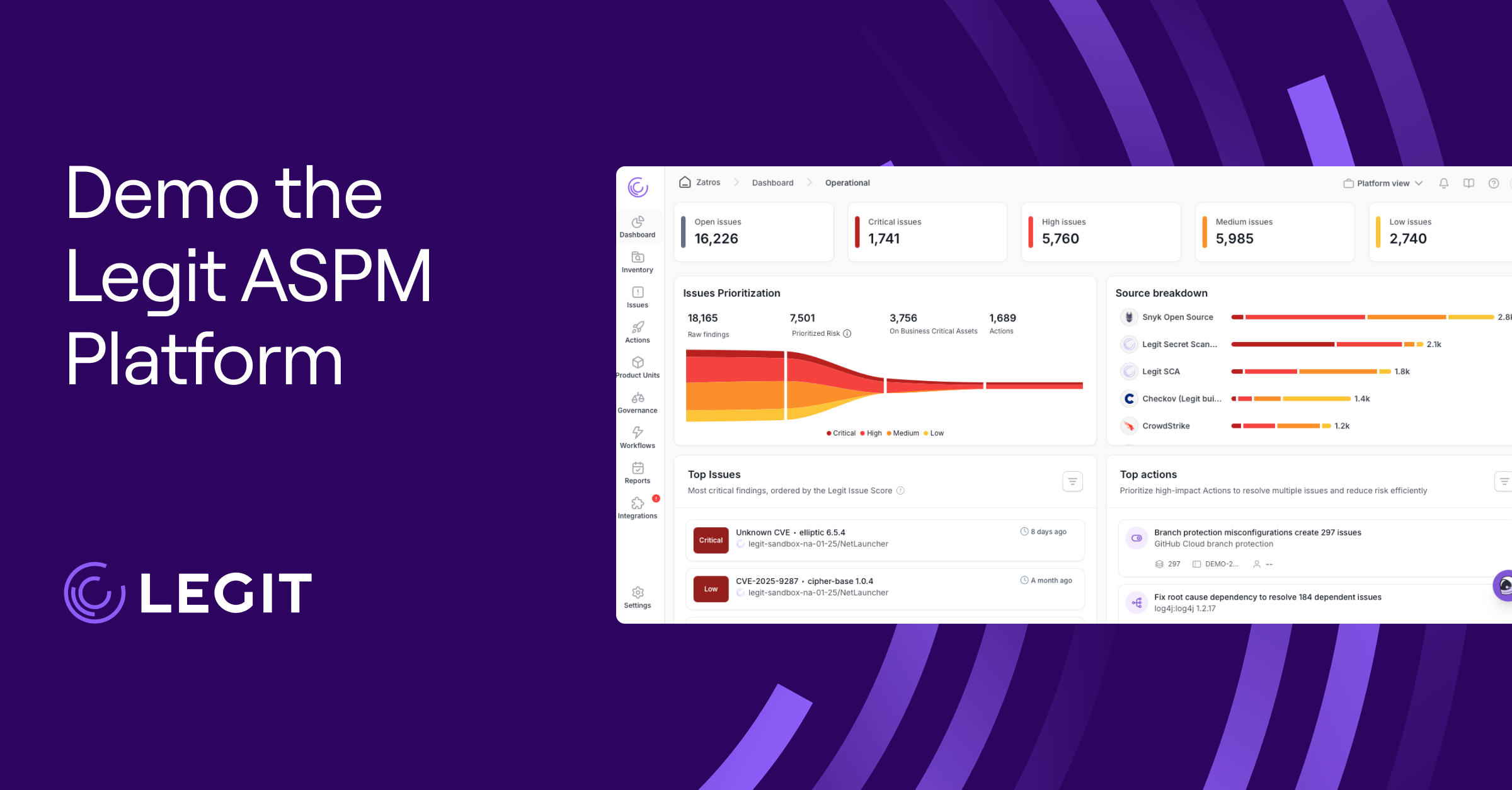Security should never be the last step in development. The longer vulnerabilities go unnoticed, the more time attackers have to find and exploit them. Shift left security flips this approach, integrating security earlier in the software development lifecycle (SDLC) instead of waiting until deployment.
By embedding security into the coding and testing phases, developers can identify and fix vulnerabilities sooner, lower costs, and speed up delivery. Let’s break down what shift left security is and how to implement it effectively.
What Is Shift Left Security?
Shifting security left moves security earlier in the SDLC, embedding security checks from the initial planning and coding stages rather than treating them as a final step. This approach minimizes last-minute fixes and aligns security with agile workflows. Many organizations adopt shift left alongside secure software development best practices, keeping security continuous rather than reactive.
5 Benefits of Shift Left Security
Moving security left enhances security and streamlines development by integrating protection into the process.
Here’s how a shift left security approach benefits teams:
- Faster remediation: Developers can fix vulnerabilities while writing code instead of revisiting old work, preventing security from becoming a last-minute bottleneck. Early detection ensures issues don’t compound over time, reducing the need for complex fixes.
- Lower costs: A single late-stage vulnerability can require extensive rework, emergency patches, or even a product recall, driving up costs. The earlier teams catch security flaws, the cheaper they are to fix.
- Stronger collaboration: When security integrates into development workflows, teams work together rather than in silos. This alignment reduces friction between developers and security teams, making security a shared responsibility rather than an external hurdle.
- Better software quality: Shift left testing embeds security checks directly into CI/CD pipelines, which strengthens application resilience and prevents security debt from piling up.
- Improved time-to-market: Security automation catches issues early, allowing development to move quickly without compromising security. Teams build secure applications before they deploy, reducing last-minute security patches and unexpected delays.
Types of Shift Left Security Tools
Shifting security left is about using the right tools to catch vulnerabilities early and automate security checks. Prevent security from becoming a last-minute headache while keeping your software secure.
Here are some common tools and their impacts:
Runtime Application Self-Protection (RASP) Tools
Traditional security tools monitor applications from the outside, but RASP protects them from the inside. It detects and blocks threats in real time as an application runs. This is useful for preventing zero-day attacks, injection exploits, and unauthorized access attempts—all without relying on perimeter defenses.
Software Composition Analysis (SCA) Tools
If your application uses open-source libraries or third-party dependencies, you need to know if they contain vulnerabilities, outdated components, or licensing conflicts. That’s where SCA tools come in. They scan dependencies for security risks, helping you patch issues before they become significant problems. Without SCA, you could be building on insecure foundations without realizing it.
Static Application Security Testing (SAST) Tools
SAST tools act like a security coach for your code, scanning it while you write to catch vulnerabilities early. They instantly flag issues like hardcoded credentials, weak authentication, and input validation flaws. Since SAST works directly in development environments, it makes secure coding a part of the workflow instead of an afterthought.
Dynamic Application Security Testing (DAST) Tools
While SAST scans static code, DAST tools test your application while it runs. This is important because some vulnerabilities only appear after execution. They simulate real-world attacks to uncover vulnerabilities like injection flaws, authentication weaknesses, and exposed sensitive data. Think of it as a controlled attack on your app to find weak spots before hackers do.
Secrets Scanning Tools
Leaving API keys, passwords, or encryption secrets in your code is a huge security risk—and happens more often than you think. Secrets scanning tools automatically detect hardcoded credentials in your source code and repositories before they get exposed. This way, attackers can't use leaked credentials to gain unauthorized access.
Additional Security Tools
Beyond these core categories, other tools can further enhance shift left security. For example, interactive application security testing (IAST) blends SAST and DAST techniques, providing real-time security analysis as an application runs. The key is to choose tools that integrate seamlessly into your existing development and security workflows.
Challenges of Shifting Security Left
Shifting security left improves your defenses, but it isn’t always easy to implement. Many organizations face roadblocks that slow adoption, create team friction, and challenge integration.
Here are some common challenges you may encounter when shifting security left:
1. Delayed Onboarding and Resistance to Change
Adopting a shift left security requires a cultural and process change that not all teams embrace immediately. Developers, security engineers, and DevOps teams may resist new requirements if they disrupt workflows. Clear onboarding, security policies, and developer-friendly tooling are necessary for an effective shift.
2. Skill Shortages and Security Knowledge Gaps
To properly implement shift left security, developers and security teams need to understand its strategies and impacts. Some developers don’t know security best practices, and security teams may lack the development expertise needed to integrate security testing into CI/CD pipelines seamlessly. This skills gap can lead to misconfigured tools, false positives, and team friction, slowing adoption.
3. Siloed Security Tools and Lack of Integration
Security tools often operate in silos, making it difficult to integrate them into existing DevOps workflows. Developers may use one set of tools while security teams rely on another, creating gaps in visibility and coordination. Without unified security solutions, you risk slowing development cycles instead of improving them.
4. Alert Fatigue and False Positives
Automated security tools generate large volumes of alerts—but without proper tuning, many are false positives. When developers are overwhelmed with non-critical security warnings, they may start ignoring alerts altogether, leading to real vulnerabilities slipping through undetected. Teams need well-calibrated security tools and prioritization mechanisms to avoid unnecessary noise.
Best Practices for Shifting Security Left
Successfully shifting left is about making security an integrated, natural part of your development workflow. Here’s how to make it work for your team:
Create Clear Policies
Developers can’t follow security best practices without clear expectations. Establishing standard policies tells everyone what needs testing, which vulnerabilities require immediate fixes, and how security integrates into development workflows. Defining these standards upfront aligns teams and avoids last-minute security bottlenecks.
Embrace Security Automation
Relying on manual security testing slows down development and increases the risk of human error. Instead, automate security testing with static analysis, dynamic analysis, and secrets scanning. When security checks run automatically within CI/CD pipelines, teams get real-time feedback, allowing them to fix issues as they code rather than scrambling at the last minute.
Leverage Remediation Guidance
Catching vulnerabilities is only part of the equation. Your team needs clear, actionable remediation steps to fix them quickly. On top of flagging issues, the best security tools provide detailed explanations and recommended fixes so developers aren’t left guessing. Learning from established DevSecOps strategies used by Fortune 500 companies can help you refine your approach and strengthen your security posture.
Foster Collaboration
The entire operations team should own security. Encouraging open communication between developers, security engineers, and DevOps teams eliminates bottlenecks and aligns priorities. Consider embedding security champions within your development teams to bridge the gap between policies and coding practices, making security a shared responsibility.
Continuously Monitor and Improve Security Processes
Shifting security left requires constant monitoring and refinement. Stay ahead of evolving threats by regularly reviewing security policies, analyzing security trends, and receiving developer feedback. By tracking security metrics and adapting your processes, you keep shift left security effective and scalable as development practices evolve.
Strengthen DevSecOps Shift Left Security With Legit Security
By shifting security to the left, you can catch and fix vulnerabilities early in the SDLC, reducing roadblocks and lowering costs—all without slowing deployment.
Legit Security strengthens this process by providing continuous security automation, real-time risk insights, and seamless integration into existing DevOps workflows. With Legit, you can embed security into your development process without disrupting speed or agility, ensuring that applications remain secure from code to cloud. Book a demo today to get started.
Download our new whitepaper.


